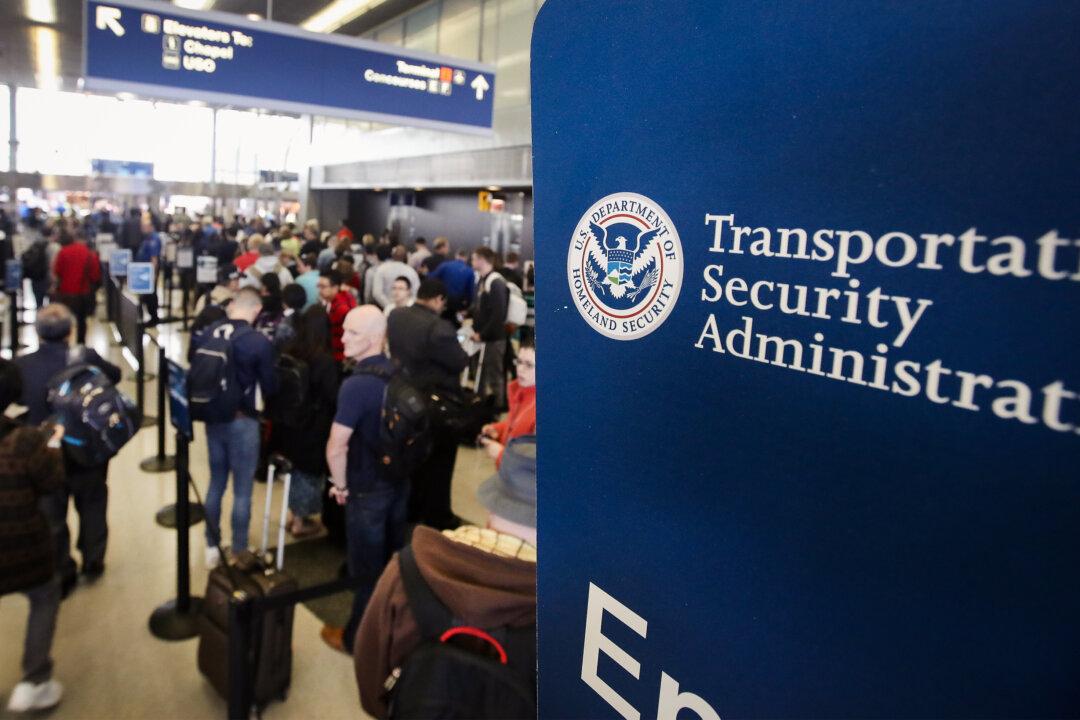The legal saga over the fate of a 1,000-foot floating barrier on the Rio Grande has entered a new phase.
Texas Gov. Greg Abbott last summer ordered the deployment of the string of giant orange buoys in the river near Eagle Pass. As a part of Operation Lone Star, the Republican governor’s signature initiative aimed to curb illegal border crossings from Mexico into his state, the buoys are anchored to the bottom and themselves rotate so that people can’t climb over or swim under them.
Arguing on Wednesday before a full, 17-member Fifth Circuit, attorneys for both Texas and the U.S. Department of Justice largely focused on the question of whether Mr. Abbott’s floating wall violates a Reconstruction-era law regulating the use of waterways.
The law, dubbed the Rivers and Harbors Appropriation Act of 1899, prohibits the “creation of obstruction ... to the navigable capacity of the waters” unless approved by Congress and permitted by the U.S. Army Corps of Engineers—the entity responsible for the maintenance of the country’s waterway system to ensure safe passage of vessels.
The Rio Grande is not subject to the 125-year-old law, Texas told the court, arguing that the stretch of river is too rocky and shallow to be reasonably called a “navigable waterway.”
“For most of its length and much of its storied history, the Rio Grande has been little more than a creek with an excellent publicist,” said Lanora Pettit, the principal deputy solicitor general of Texas. “If the U.S. is right, then any body of water would be deemed navigable and thereby subject to federal jurisdiction.”
Ms. Pettit further argued that, for more than a century, the Rivers and Harbors Appropriation Act had been interpreted as applying only to waterways that, “in their ordinary or natural condition, serves [as] the artery of interstate commerce across which trade or travel can be or is conducted.”
That interpretation apparently does not fit the Rio Grande, which “has too many rocks and not enough water,” she argued. “The only reason we have water in that stretch [where the buoys were installed] is because of the irrigation, and irrigation infrastructure only puts it about 18 inches deep.”
Arguing for the Justice Department, attorney Michael Gray urged circuit judges to uphold the district judge’s ruling that the Rio Grande was historically navigable. He pointed to past ferry traffic in the area, as well as the use of patrol boats by border enforcers.
“The most prominent [evidence] being ferry traffic, which is expressly foreign commerce conducted on the river by floating structures, boats,” Mr. Gray told the court. “That foreign commerce is sufficient to bring the area within Congress’s power ... to regulate that commerce.”
Mr. Gray also claimed that the floating wall, which was expected to deter illegal immigration, interfered with the U.S. Border Patrol officers performing their duties.
“The Border Patrol is on the river basically every day,” he said, emphasizing that the Border Patrol had conducted 249 rescues on the Rio Grande between 2018 and 2023. “There was evidence here that any obstruction to the river, including this obstruction could impair response times of the Border Patrol as the Border Patrol does rescues on the river.”
The attorneys also briefly made their case on whether the floating barrier counts as a constitutional means of defending Texas against an invasion.
“Assuming that the question of invasion is not justiciable, then under what circumstances can the United States thwart that attempt at self defense?” Chief Judge Edith Jones, a Ronald Reagan appointee, asked Mr. Gray.
“You need some organized hostile force,” the DOJ lawyer replied, arguing that the influx of illegal immigrants is not the same kind of “invasion” the Constitution’s framers had in their minds.
“[Texas government’s] argument is, once they say invasion, ‘We can do anything we want for as long as we want,’” he said. “We don’t think that’s right.”
The Fifth Circuit did not indicate when they would rule.
The Fifth Circuit, headquartered in New Orleans, Louisiana, is also handling another dispute between Texas and the U.S. government. This separate case centers around Shelby Park, a 47-acre public park in Eagle Pass that the federal government had been using as a staging area to process illegal immigrants.
In January, Texas National Guard soldiers deployed by Mr. Abbott took control of Shelby Park, and have since used roadblocks and concertina wires to prevent Border Patrol officers from processing migrants in the area.
“The federal government has broken the compact between the United States and the States,” Mr. Abbott said after the U.S. Department of Homeland Security demanded that he grant Border Patrol agents access to the park. “Instead of prosecuting immigrants for the federal crime of illegal entry, President Biden has sent his lawyers into federal courts to sue Texas for taking action to secure the border.”







